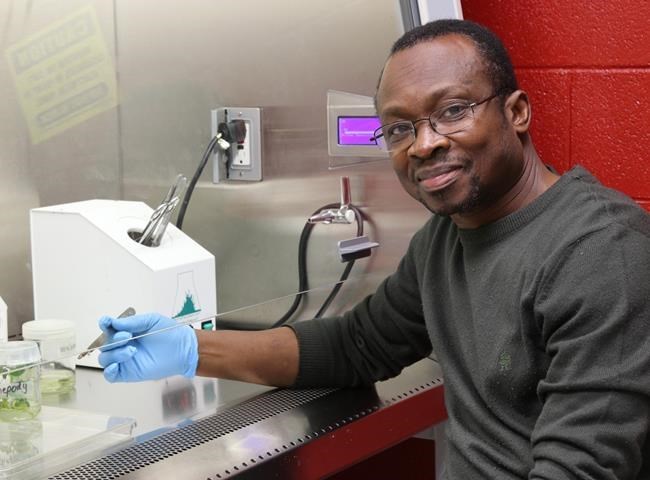CHARLOTTETOWN — Federal scientists in Atlantic Canada are trying to develop a new breed of potato that is better adapted to growing conditions brought on by climate change.
Bourlaye Fofana, a research scientist at Agriculture and Agri-Food Canada, leads a team in Charlottetown that has examined wild potato varieties native to the South American Andes and that show potential to help the development of a more drought-resistant potato for North American markets.
There are more than 5,000 potato varieties worldwide, says the Agriculture Department, and that high number has decreased the genetic differences between many of them, making some potatoes less resilient to disease and to climate change.
“We see a lot of problems because genetic diversity among these cultivated commercial varieties is quite narrow,” Fofana said in an interview. “With climate change and heat waves, this lack of genetic diversity could be a big problem in the future.”
Most commercial varieties of potatoes are of tetraploid origin — they have four copies of each chromosome in their DNA, with two copies inherited from each plant parent. Fofana has been working with wild potato varieties native to Peru that have two copies of each chromosome and are known as diploid. He said the chromosome difference makes the wild potato variety easier to work with in the lab.
“It’s easier to find (genetic) markers; so, if you find your marker in diploids, it can be used in a tetraploid,” he said.
Fofana said the wild potatoes are smaller than traditional commercial varieties but look the same.
“I have been working on diploids since 2014 and we are getting clones that are viable in terms of yield, tuber size and quality,” he said. “We know, for example, the starch content is quite good and the processing quality is quite good.”
Fofana and his team, along with researchers in Kentville, N.S., and a researcher in Chile, have evaluated 384 diploid potato clones for drought tolerance and plant maturity. Of those, 127 were found to be late-maturing and tolerant to drought conditions while nine were early to moderate-late maturing and drought tolerant.
Fofana said he’s “very excited” about the potential of the research findings.
“Because in our collection we have diploid (potatoes) that are early maturing and this means you can plant it and it can give you an expected yield as early as possible,” he said. “We also have some clones that can grow over a longer period of time.”
The research by Fofana and his team is seen as an important first step scientifically. About 50 of the most promising clones are being turned over to the department’s breeding program in Fredericton for further study.
At the Fredericton facility the potato clones will be evaluated for size and shape along with yield potential and cooking and processing traits. After that they could be released as potato varieties, or their seeds, plants or plant parts can be used in potato breeding.
Fofana said building resilience in crops is becoming increasingly important as conditions grow drier and hotter, even in prime growing areas in Atlantic Canada.
“With climate change the frequency of drought is increasing, especially where water resources are limited,” said Fofana. “So we need to be proactive and see how we can adapt our crop and cropping system to meet these new challenges.”
This report by The Canadian Press was first published May 20, 2024.
— By Keith Doucette in Halifax
The Canadian Press



